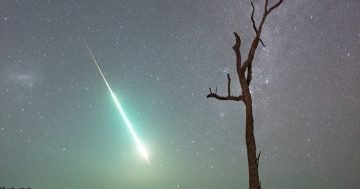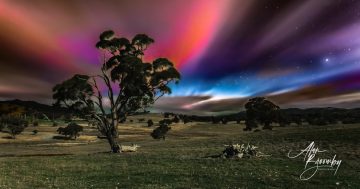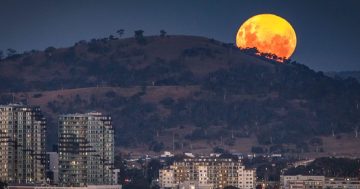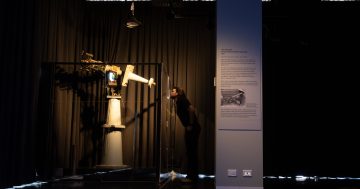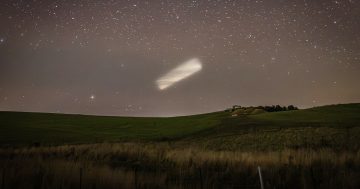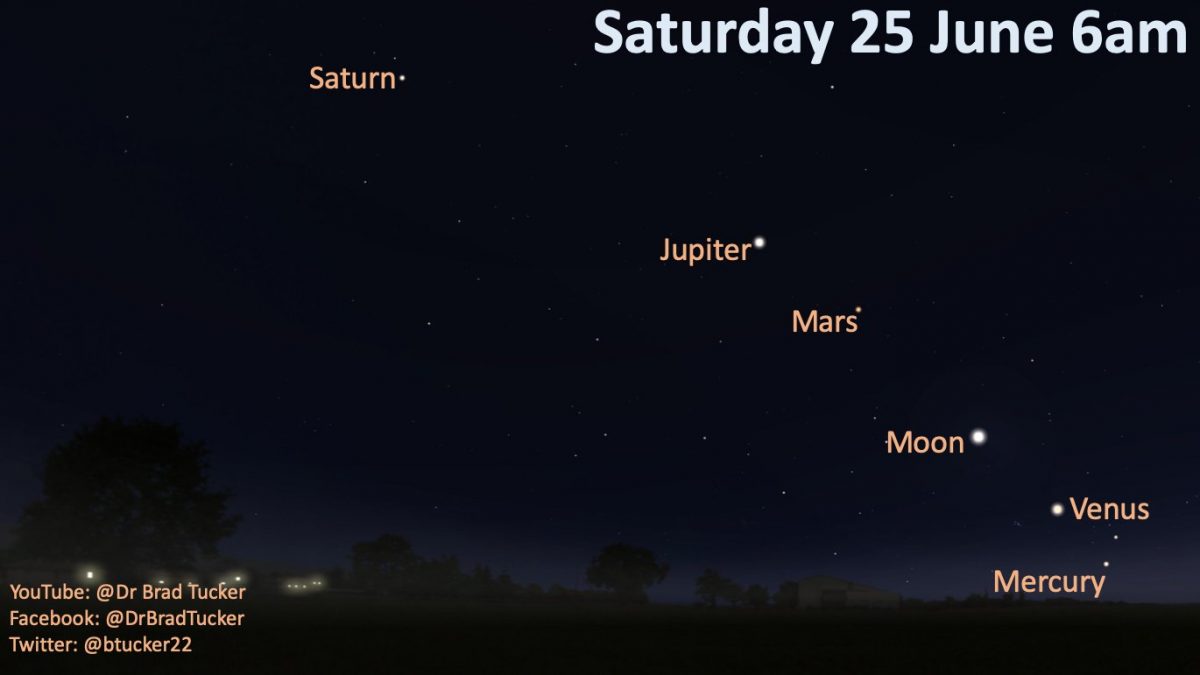
The five planets, as captured by Dr Brad Tucker on Saturday, 25 June. Photo: Dr Brad Tucker.
If you’ve put off setting the alarm and bracing the frigid morning air for a peek at the alignment of Mercury, Venus, Mars, Jupiter and Saturn, you’re running out of time. The five planets visible in Canberra’s morning sky are about to go their separate ways for another 18 years.
From about 5:45 am to 6:15 am, the five planets can be seen in an arc spanning the eastern horizon.
Dr Brad Tucker is an astrophysicist at the ANU Mount Stromlo Observatory. He says it’s worth making the effort to see the phenomenon.
“It’s actually quite rare to see all of them at the same time in the same part of the sky because they’re all going around the Sun at different speeds and can be in different spots relative to the Sun and the Earth.”
He says Uranus and Neptune are too distant to be seen without the aid of a pair of binoculars or a telescope, which leaves five planets visible to the naked eye.
“Four of these have been visible throughout most of the night and in the early morning since about April, but we’ve been waiting for the straggler Mercury to get into position.”
Even though Mercury goes around the Sun every 88 days, it never strays far, so there is only a very small window of time when it can be seen without the Sun’s intense light drowning it out.
“That’s what has been happening in the past few weeks,” Brad says.
“We’ll be able to see Mercury for about five to six more days. We have the benefit that it’s occurring at the same time as the winter solstice, so we have longer nights and later sunrises and can just catch it.”
The smallest and second hottest planet after Venus, Mercury, can be spotted “really low” on the eastern horizon just before sunrise.
“Slightly above and really bright, you have Venus, further ahead and a little bit fainter is Mars, followed by Jupiter and Saturn almost right above.”
A variety of mobile apps such as Star Walk, Sky View Lite, and Sky Guide can help point them out for you too.
The five planets only line up every 18 years, alternating between morning and evening depending on what side of the solar system the planets are.
Brad says the formation also relies on Saturn, which takes 10,756 days to go around the Sun.
The next time all five appear in the evening sky together will be 2040, then again in 2058 in the morning sky.
Later on in Canberra’s celestial calendar, we’re due for a ‘super moon’ on 13 July. A super moon is a full moon that coincides with when the Moon is closest to the Earth.
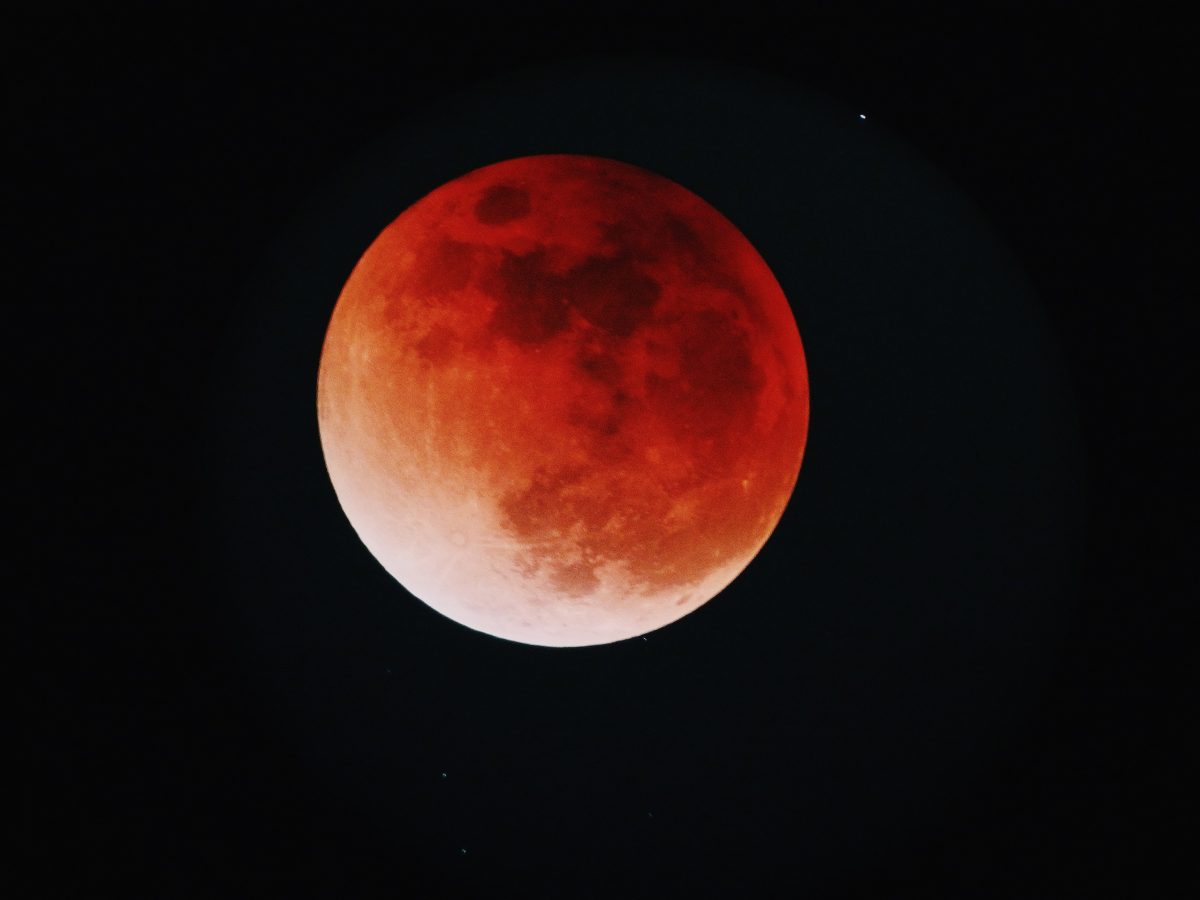
The lunar eclipse will appear on 8 November. Photo: Yu Kato.
It will be a nice, bright full moon, but Brad can’t say for certain it will look dramatically bigger. He’s more excited for the total lunar eclipse on 8 November, when the Earth passes directly between the Sun and the Moon, casting a shadow on the Moon and making it appear dark red.
“The great thing is that it’s a super long eclipse, so it will last for more than an hour and a half in the evening from about sunset to about 11 pm,” Brad says.
As for a solar eclipse, when the Moon gets in the way of the Sun and casts a shadow over a patch of Earth, there will be a partial eclipse over Australia on 20 April 2023.
The eclipse will be visible in Sydney from 2 pm on 22 July 2028 for three minutes and 50 seconds.
The Bureau of Meteorology (BOM) predicts mostly cloud-free and frosty mornings this week, with minimum temperatures between 1 and -4 Celsius.
It seems the planets have aligned.













